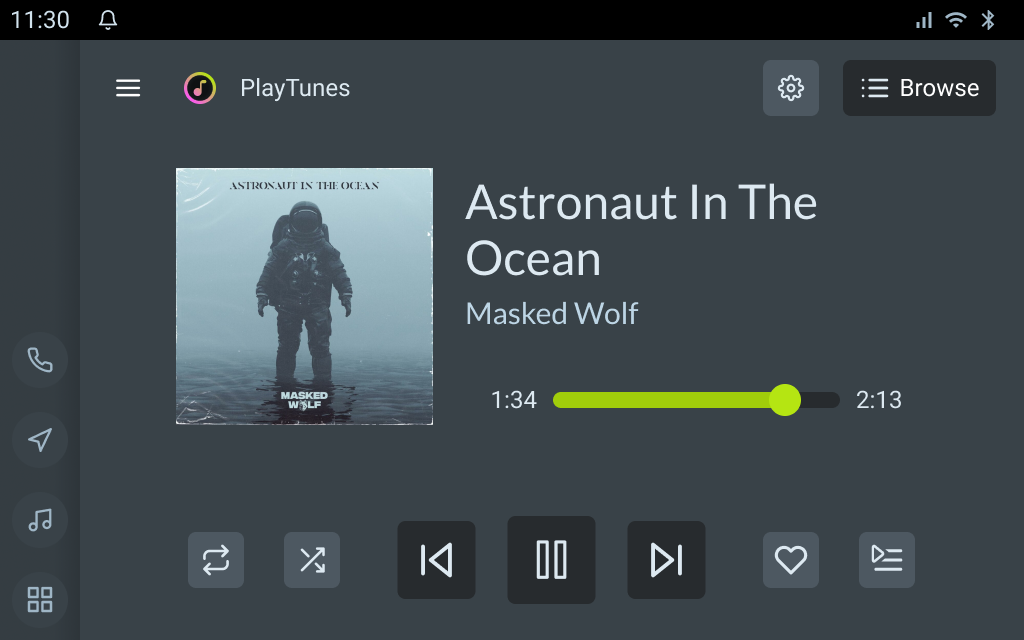Android Automotive OS™ Media Applications
All media and messaging applications are Android Automotive OS compliant. While the messaging specification are not yet complete, Android™ has defined the specifications for media. Android Automotive OS media applications are natural evolution of Android Auto™ applications (projection mode).
Android Auto relies on a templatized approach to surface the media experience. Media applications implement a media browse service so that Android Auto or Android Automotive OS can discover and display the media providers’ content. The screen shot below shows a sample media experience. The UI is displayed by the Device (head unit) Media Player, but the content for the experience comes from the 3rd party media application. The 3rd party media application also has control of the media management buttons shown at the bottom of the screen shot.

Android Automotive OS adds an additional interface on top of Android Auto specifications for settings and sign-in to allow embedded use cases. The diagram below shows the software architecture for Android Auto media applications. The Android Auto App is a headless application and communicates with the Media App on Android, which provides the UI layer for the experience thru templates. Essentially there is a singe media player (Media App), but the content for the media player comes from different Media applications.

The OEM has freedom on the design of the templets to ensure they conform to the design language of the head unit. The content provider has control over the album art and the media management buttons, icons, and actions. For example, a music streaming provider may support rewind, play/pause/, and fast forward buttons. A news streaming provider on the other hand may support a 10 second rewind button to allow the user to quickly rewind for missed information.
Android, Android Automotive OS and Android Auto are trademarks of Google LLC.